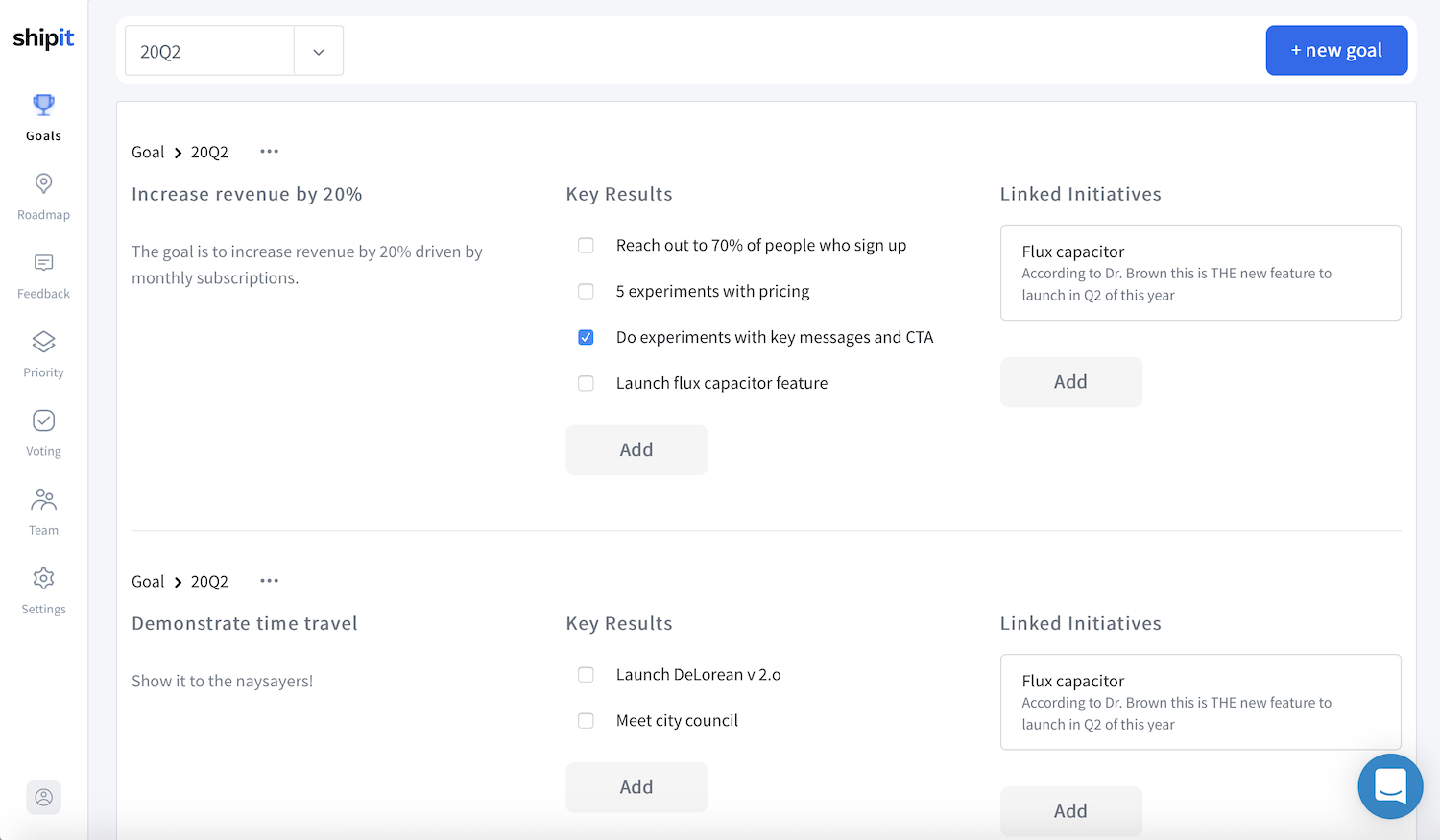With shipit’s goals feature, you can now create OKR-driven product roadmaps.
Created on by Tom Desmet

Photo by Alfred Aloushy
We just released a new feature: goals. Goals implement the widely used OKR framework. OKR stands for Objectives and Key Results. They originate from the tech-industry (Intel, Google) but can be effectively applied in any field, product, or department.
The basic idea is that you 1. Set company and product objectives that you want to achieve with the team within a certain period of time 2. Track progress through a handful of key results per objective 3. And deploy the initiatives you believe are needed to realise it
For product teams using shipit, the initiatives are items on the product roadmap. When your roadmap is goal-oriented, every initiative on there should ideally contribute to one or multiple of your company OKRs.
There is a “many-to-many” relationship between roadmap-items and objectives. That means that one roadmap-item can be linked to multiple objectives. And one objective can be linked to multiple roadmap items.
Here’s how this looks in shipit:

Creating an objective
Let’s say that we create an objective to better understand the people who sign up for our software. On the “Goals” page press the blue button “Add objective” and give your objective a title.
The title could be: “Get a deep understanding of the expectations and needs of new signups for our product”. Objectives typically do not contain a number. They should be inspirational and give a sense of direction.
Adding key results
And next, setting up the Key Results to help you determine if you have reached or progressed towards your objectives. Key Results are recommended to contain a metric, and often they are a desired outcome based on actions you take.
- 50% of our new signups tell us what their job-role is in the company
- 25% of our new signups tell us what their 5 biggest challenges are
- 25% of our new signups tell us what problems they hope that shipit will solve
- 5% opt-in for the personal interview with our product manager
Of course, you are free to add anything you see fit here. They don’t need to be outcome-driven. For example “Reach out to 10 customers” could be a great key result, too.
The key-results in shipit are organised as a checklist. Once you have achieved it, you can check it off to keep track of your progress.
Linking product roadmap iniatives
In the last column, you can link roadmap-items to the objective. Add as many items to the objective as relevant. You can also link objectives to roadmap-items the other way around. When you open an item, add objectives to it.
So, from now on, as a Product Manager, you can always explain to both your team and your management how each roadmap initiative contributes to company goals and OKRs.